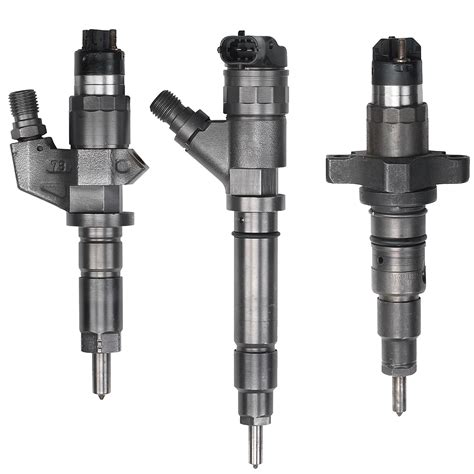Recent years have seen a significant change in the method used to supply fuel to an engine’s combustion chambers. Previously, it came through a carburettor, a comparatively straightforward but temperamental and inefficient part.
Fuel injection took its place in the 1990s as a method that could improve engine performance and meet the strict new pollution regulations that were put in place at the time. Every car has fuel injection now, although in the past it was costly and only found in high-end cars.
What is a fuel injector?

A fuel injector regulates the injection of fuel into an engine’s internal combustion chamber where it is mixed with air and ignited. The combustion chamber is where the chemical energy in diesel, hydrogen, and natural gas is converted into power for the vehicle. When actuated by the electronic control unit (ECU), the injector delivers a precise amount of fuel to ensure efficient combustion.
How does it work?
A fuel injector in a diesel engine is a system consisting of a solenoid, nozzle, and needle. Modern fuel engines are direct injection, delivering fuel directly into the combustion chamber. As the piston moves upward, an electrical signal is sent to the solenoid, allowing high-pressure fuel to flow through the nozzle and into the combustion chamber. This mixture auto-ignites, creating power and driving the engine’s pistons. The high fuel pressure and fine injector nozzle holes ensure optimal air-fuel mixing, meeting stricter emissions standards. In diesel engines, a fuel injector can fire multiple pulses in a single power stroke, aiding in noise mitigation and emissions control.
Types of Fuel Injection Systems
Single-Point or Throttle Body Fuel Injection
Single-Point or Throttle Body Fuel Injection (TBFI) was an early injection system. It combines fuel with incoming air in the intake manifold before distributing it to the cylinders. While TBFI is cost-effective and requires minimal maintenance, it lacks accuracy. Excess fuel may cause performance issues and reduced fuel efficiency when you release the accelerator.
Multiport Fuel Injection
Multiport injection improved upon TBFI by placing smaller, more accurate injectors closer to each cylinder. This allowed for precise fuel distribution to each cylinder, enhancing fuel economy. However, all injectors spray simultaneously, potentially leading to unburned fuel during rapid acceleration or deceleration.
Sequential Fuel Injection
Sequential fuel delivery systems build on multiport systems but inject fuel in precise timing, matching cylinder actions. This results in improved fuel economy and performance. Since fuel remains in the port for a short time, sequential injectors tend to stay cleaner and last longer.
Direct Fuel Injection
Direct Injection introduces fuel directly into the cylinder, bypassing the intake. While common in diesel engines, it’s primarily found in high-performance gasoline vehicles. Direct injection offers excellent performance but demands meticulous maintenance for optimal engine operation.
Advantages of a fuel injector
Lower emissions
Fuel injection systems are more efficient than carburettor systems due to their precise fuel injection, high performance, and less pollution. They use complex sensors and computing power to measure fuel needs, eliminating unnecessary fuel consumption. They also ensure the engine consumes fuel efficiently and meets emission standards.
Adaptability
Fuel injection systems offer adaptability to various riding conditions, as they constantly monitor air oxygen levels and adjust the air-fuel mixture for optimal performance. This is especially beneficial at higher altitudes, where oxygen levels decrease. Fuel-injected systems also perform better in diverse temperature and humidity conditions.
Easy maintenance
Fuel injection systems provide a quicker throttle response and are maintenance-free. They can be customized for different maps, allowing for increased power or leaner engine performance. Some manufacturers offer selectable modes that control fuel injection based on the selected mode, allowing for different drive modes for different riding conditions.
Disadvantages of fuel injectors
Higher Initial Cost
Compared to carburetor-based systems, fuel injection systems are more expensive to manufacture and install, which can increase vehicle production costs.
Complex System
Fuel injection systems involve intricate components such as sensors, actuators, and control units. This complexity necessitates advanced knowledge for maintenance and repair.
Sensitivity to Fuel Quality
Poor-quality fuel with contaminants or improper additives can disrupt the precision of injectors, leading to reduced engine performance or damage.
Electronic Vulnerability
Since modern fuel injection systems rely heavily on electronic control units (ECUs), sensor failures or software issues can lead to malfunctions that are challenging to address.
Detecting a faulty injector
Wearing an injector can cause issues like pre-ignition, misfiring, uneven idling, or detonation, which can harm the engine. Injector problems can also cause fuel odor. Check the exhaust manifold temperature with a laser thermometer, as a faulty injector can cause uneven combustion. Fuel consumption may rise due to large fuel droplets not atomizing in the combustion chamber. Examine the injector for leaks or cracks, use a multimeter to measure electrical resistance, and listen for injector noises using an engine stethoscope.




